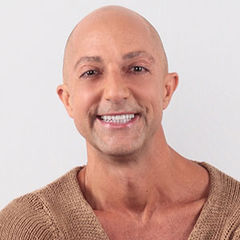In some places, the group fitness business looks much like it did decades ago: hour-long classes, timetables posted on photocopied paper for members, and dancing to simple chorus-verse repeated, pre-choreographed moves. Upon closer look, however, the business of group fitness has evolved dramatically in recent years based on the changing nature of the fitness industry.
Nomenclature
Terminology has evolved. Gone are the days of teaching “aerobics” and “water aerobics.” These are now called “group movement” and “aquatics programming.” We no longer tell our clients to “stand up straight” or “bend over with a flat back,” because our understanding of what a neutral spine really means renders those phrases inaccurate. Instructors now save static stretching (which was once featured in many class warm-ups) for the final portions of workouts when body temperature is highest. This is also why we no longer refer to this section of class as the “cool-down,” but as the “final phase” or “transition” instead. Gone is the phrase “squeeze your tummy and work your stomach,” because professionals now understand that we predominantly train muscles, not organs, so we cue our participants to “contract your transverse abdominis” and “engage your core muscles.”
Movement and Equipment
Years ago, groups of fitness enthusiasts would come together to be led through movements recorded on a long-playing record that interspersed chorus-verse exercises. Today, that form of pre-style choreography still exists with the winning fitness formulas of Zumba®, Les Mills®, Turbo Kick® and others.
In addition to that pre-choreographed craze, however, individually choreographed “freestyle” classes now populate schedules for two reasons. First, the onslaught of so many types of fitness products for classes has reached its highest point, giving instructors reasons to branch out from pre-choreographed programs. TRX®, BOSU® and Kamagon® are examples of equipment in which the training offers more suggestions than pre-choreographed complete classes so that instructors can match movements to the people who actually attend instead of making people match the movements. Second, the buzz of instructor-driven classes allows established, innovative instructors to draw people to their clubs and classes based on their unique personalities instead of the program doing the attraction. Consequently, “movement studios” have replaced “aerobics rooms,” and multi-use space is now the norm.
Keith Irace, Regional Director for Group Fitness for Equinox in Los Angeles agrees. “At Equinox, we offer mostly instructor-driven group fitness programming in addition to our in-house-developed signature formats, because we’re an education and development based company, encouraging our instructors to share their most current knowledge through their signature classes.” Irace sees a programming that is more differentiated than in years past, claiming “our menu is bigger and better than ever to meet the needs of our members, but also to consistently encourage them to try something new.”
Today’s fitness menus offer clients a more evolved experience than in previous years. The Cooper Center in Texas, where Dr. Kenneth Cooper launched “Coopering” or “aerobics” research in the last century, always shows trends leading the way in group fitness. Deborah Puskarich, Group Exercise Director at the Cooper Fitness Center at Craig Ranch in Texas, points out two reasons why today’s programs are so versatile: “Fusion yields greater results within shorter class time periods,” and “more people who used to be afraid come to mindful disciplines like yoga.” Puskarich adds that their motto now is “Get ‘em in, get ‘em fit, get ‘em goin’.”
Class Length
Unlike the shorter classes Puskarich offers, some of us remember that all classes used to be slotted for 60 minutes. Given that the number one reason so many individuals cite for not attending classes is a lack of time, clubs now understand that shorter classes attract a greater number of individuals. Manuel Velázquez, lead instructor at Rancho La Puerto in Tecate, México, sees many first-timers every week. “Shorter options also provide newcomers a less-daunting task of feeling successful and accomplished in completely new experiences, because they know they only have to move for 25 to 30 minutes.” To be sure, longer classes still have a place on schedules, but not without the shorter options so popular today.
Music
Music choices today surpass those from years ago, when instructors had to make their own cassette tapes. With downloadable tunes from multiple companies, gone are the days of having to choose a compact disk, where someone unfamiliar with your classes and clients has chosen your beats per minute and song selections. Professional music sources now allow instructors to not break the law, whether teaching pre-style or freestyle programming. The BMI and ASCAP laws have changed, so gyms and instructors collecting fees from what the law deems to be “public performances” encourage legal music in their facilities. Technologies such as smartphones and Apple iPods® have freed instructors from having to choose compact discs because now they can create, edit and shuffle tunes on the spot. Furthermore, paid programs like PowerMusic1® allows instructors to not only pitch up and down any electronically stored music, but also to pay a small monthly licensing fee that grants access to their entire catalog of available, customizable, music, including the options to “Tabatacize” any track over five minutes in duration.
Stepping back to look at where the industry has come in group fitness can give both new and veteran instructors alike a fresh appreciation for the industry at perhaps the most exciting time in its existence until now.
Lawrence Biscontini, M.A., remembers making cassette tapes and teaching chorus-verse classes years ago. He also went to Washington, D.C. to be one of the first Gold-certified ACE Group Fitness Instructors in the world. For more than 30 years, he has been watching group fitness evolve almost all continents. Living with divided time between the USA and Europe, Biscontini is a fitness consultant and ACE Spokesperson who keeps his finger on the pulse of international group and personal fitness trends. Find Lawrence at www.findLawrence.com.




 by
by 









 by
by